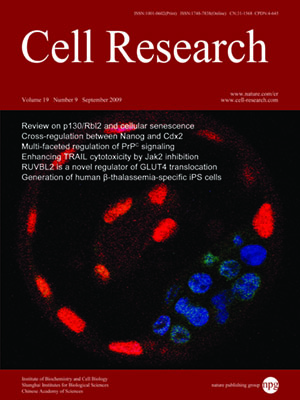
Volume 19, No 9, Sep 2009
ISSN: 1001-0602
EISSN: 1748-7838 2018
impact factor 17.848*
(Clarivate Analytics, 2019)
Volume 19 Issue 9, September 2009: 1110-1119
ORIGINAL ARTICLES
Adventitious root formation in rice requires OsGNOM1 and is mediated by the OsPINs family
Shiping Liu1,2, Jirong Wang1, Lu Wang1, Xiaofei Wang1, Yanhong Xue1, Ping Wu1 and Huixia Shou1
1State Key Laboratory of Plant Physiology and Biochemistry, College of Life Science, Zhejiang University, Hangzhou 310058, China
2College of Chemistry and Life Science, China Three Gorges University, Yichang 443002, China
Correspondence: Ping Wu, Huixia Shou,(clspwu@zju.edu.cn; huixia@zju.edu.cn )
The fibrous root system in cereals comprises primarily adventitious roots (ARs), which play important roles in nutrient and water uptake. Current knowledge regarding the molecular mechanism underlying AR development is still limited. We report here the isolation of four rice (Oryza sativa L.) mutants, from different genetic backgrounds, all of which were defective in AR formation. These mutants exhibited reduced numbers of lateral roots (LRs) and partial loss of gravitropism. The mutants also displayed enhanced sensitivity to N-1-naphthylphthalamic acid, an inhibitor of polar auxin transport (PAT), indicating that the mutations affected auxin transport. Positional cloning using one of the four mutants revealed that it was caused by loss-of-function of a guanine nucleotide exchange factor for ADP-ribosylation factor (OsGNOM1). RT-PCR and analysis of promoter::GUS transgenic plants showed that OsGNOM1 is expressed in AR primordia, vascular tissues, LRs, root tips, leaves, anthers and lemma veins, with a distribution pattern similar to that of auxin. In addition, the expressions of OsPIN2, OsPIN5b and OsPIN9 were altered in the mutants. Taken together, these findings indicate that OsGNOM1 affects the formation of ARs through regulating PAT.
Cell Research (2009) 19:1110-1119. doi: 10.1038/cr.2009.70 published online 23 June 2009
FULL TEXT | PDF
Browse 1934


